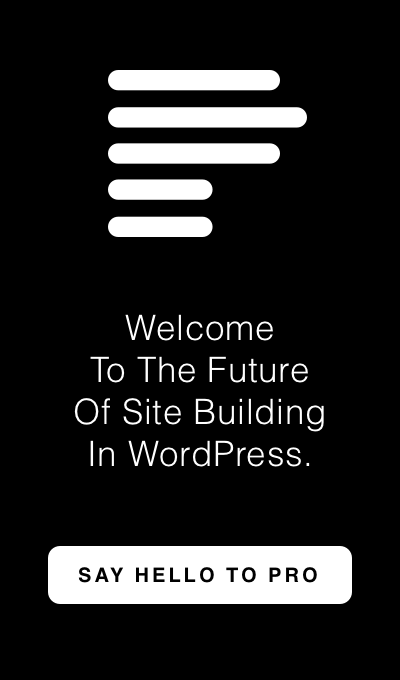-
AuthorPosts
-
March 18, 2016 at 3:06 pm #843543
When I put a video on a slide, it stops the slideshow and all is well. When the video ends, the slideshow continues and the audio from the video (clearly the video is still playing in the background) is still heard on the next slides. There’s no stop. Can you advise?
March 18, 2016 at 9:42 pm #843896Hi There,
Thanks for writing in! To assist you with this issue, we’ll first need you to provide us with your URL. This is to ensure that we can provide you with a tailored answer to your situation. Once you have provided us with your URL, we will be happy to assist you with everything.
Cheers!
March 19, 2016 at 5:34 pm #84462474systems.com
March 19, 2016 at 5:35 pm #844625And astUtemy.com
March 20, 2016 at 5:43 am #844988Hey there,
I don’t experience the issue on my end. Or, is this happening to a specific page? What operating system and browser are you using?
Thanks.
March 20, 2016 at 10:21 am #845247I have it turned off. It’s a mess so I can’t leave it on. Safari mac OS X. Chrome.
March 20, 2016 at 6:40 pm #845620Hi There,
Would you mind sharing us your admin credentials so we could check your setup closer. I would like to ask also if we could add a new test page so that we could replicate the issue.
Don’t forget to set it as private reply.
Thanks.
March 22, 2016 at 4:42 pm #848609This reply has been marked as private.March 22, 2016 at 4:43 pm #848610You may setup a test page and use slider “Home Page Slider for Themeco to test.” I’ve made it ready for you. I also created Themecoslider page.
March 22, 2016 at 9:41 pm #848906Hi there,
The video is placed as normal video embed, and with that, the slider has no connection or control over the video playback. With this requirement, it’s best to use Rev. Slider as it will give you more option and controls over the video and not just the embed.
Thanks!
March 25, 2016 at 8:48 pm #853064Really? No way to do it here?
March 26, 2016 at 1:02 am #853191Hi there,
It depends on your implementation, the embed code is usually provided by their respective owner. Since the code is not from us, it can’t be controlled unless they will provide a way like API.
To explain it clearly, let’s use a youtube video as a sample.
1. Standard Video Embed code
<iframe width="560" height="315" src="https://www.youtube.com/embed/nDXMoxwARP0" frameborder="0" allowfullscreen></iframe>This embed code will play within youtube’s website, but only displayed on your site as an iframe. Like a window within your site, but it does not actually belong to your site. You can’t decide when it should start, will end, or how it will behave through scripting. You can only control it through interaction like click play, pause, and etc.
2. Video API – https://developers.google.com/youtube/2.0/developers_guide_protocol | https://developers.google.com/youtube/iframe_api_reference#Getting_Started
<script> // 2. This code loads the IFrame Player API code asynchronously. var tag = document.createElement('script'); tag.src = "https://www.youtube.com/iframe_api"; var firstScriptTag = document.getElementsByTagName('script')[0]; firstScriptTag.parentNode.insertBefore(tag, firstScriptTag); // 3. This function creates an <iframe> (and YouTube player) // after the API code downloads. var player; function onYouTubeIframeAPIReady() { player = new YT.Player('player', { height: '390', width: '640', videoId: 'M7lc1UVf-VE', events: { 'onReady': onPlayerReady, 'onStateChange': onPlayerStateChange } }); } // 4. The API will call this function when the video player is ready. function onPlayerReady(event) { event.target.playVideo(); } // 5. The API calls this function when the player's state changes. // The function indicates that when playing a video (state=1), // the player should play for six seconds and then stop. var done = false; function onPlayerStateChange(event) { if (event.data == YT.PlayerState.PLAYING && !done) { setTimeout(stopVideo, 6000); done = true; } } function stopVideo() { player.stopVideo(); } </script>As you can see, the second is the one that requires much coding and development. You can decide when it can be played or stop, it can be integrated into every slider’s action. Like when the slider stop, then playback can be stopped too through scripting. Rev. Slider uses this, but even if the plugin has this API feature and you still use standard embed, then it’s not an issue with the plugin. But the way you’re implementing it.
Youtube API isn’t supported by Layer Slider ( http://www.docs.purethemes.net/sukces/layerslider/documentation/documentation.html#videos ), it’s either code it with API within the Layer Slider or use another Slider that already uses the API.
That’s the same reason why we provide bundled sliders so users can choose. Some plugin has features that others don’t have.
This is just about youtube API, their own standard. All developers should follow the standard of what they wish to implement. It’s not their way to decide. Though, yes, Layer Slider should implement the API too. But it’s not us to decide, it’s the plugin author. It’s doable
Thanks for understanding.
March 26, 2016 at 1:07 am #853200How about a pro Vimeo account? Or maybe on my MAXCDN account??
March 26, 2016 at 2:46 am #853259Hi there,
Regardless of provider, it will not work if the plugin doesn’t have support for API. Layer Slider is only limited to standard embed or manual coding for API.
Please try the Rev. slider, it has support for Vimeo and standard embed too.
It may work with Layer Slider, but as I mentioned, that would require manual coding of API as embed.
Thanks for understanding.
-
AuthorPosts
